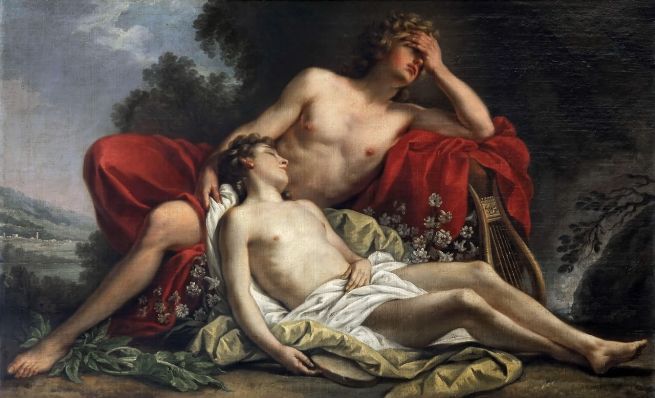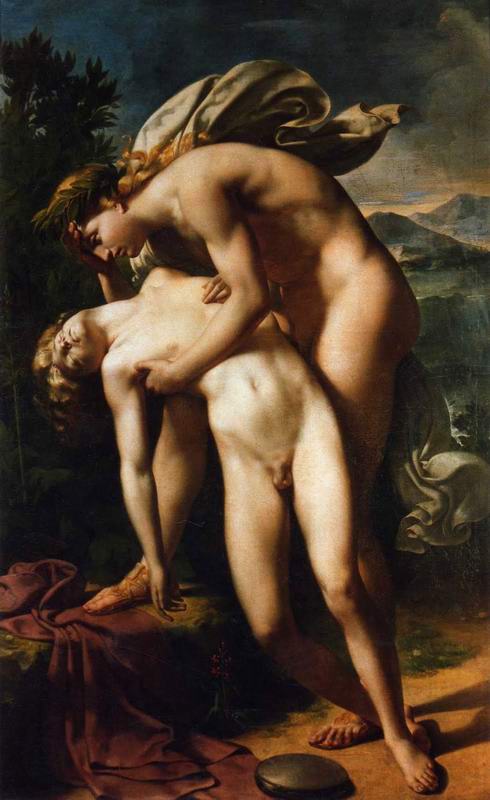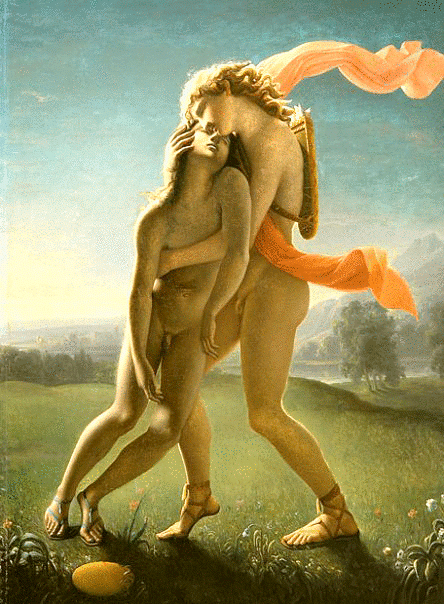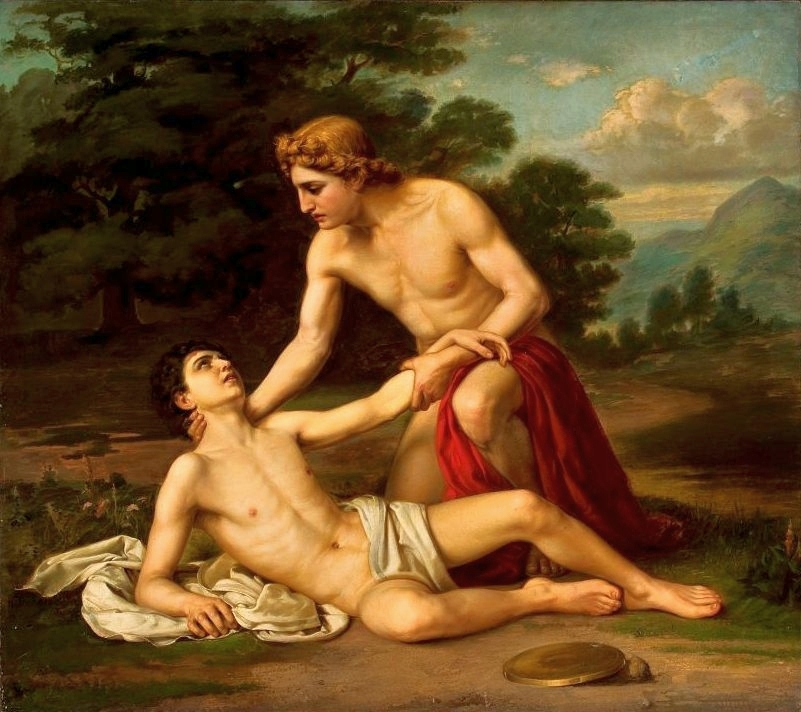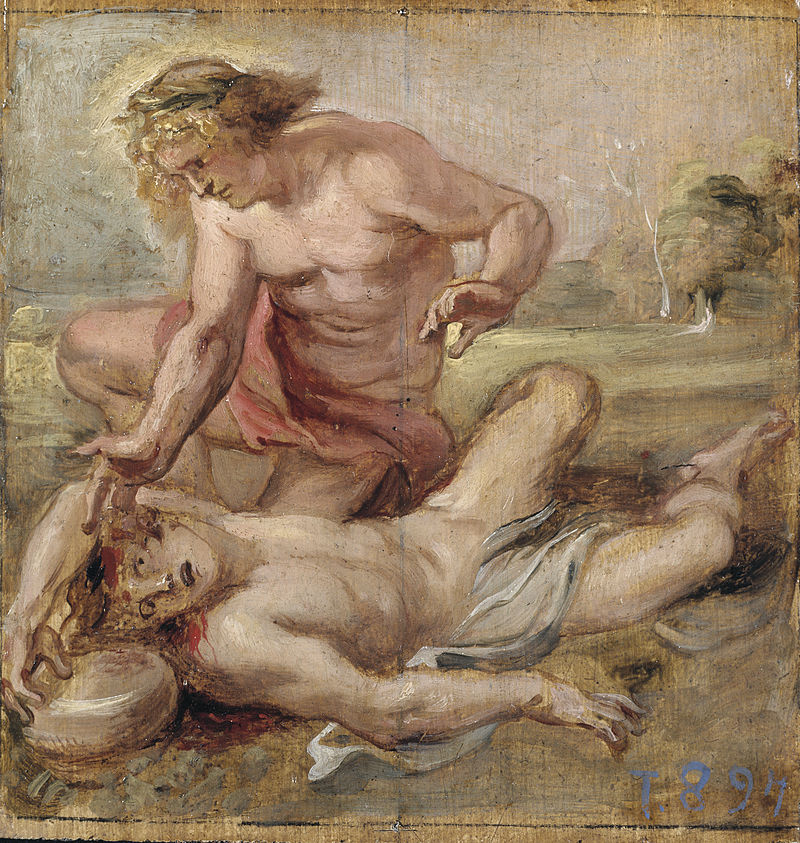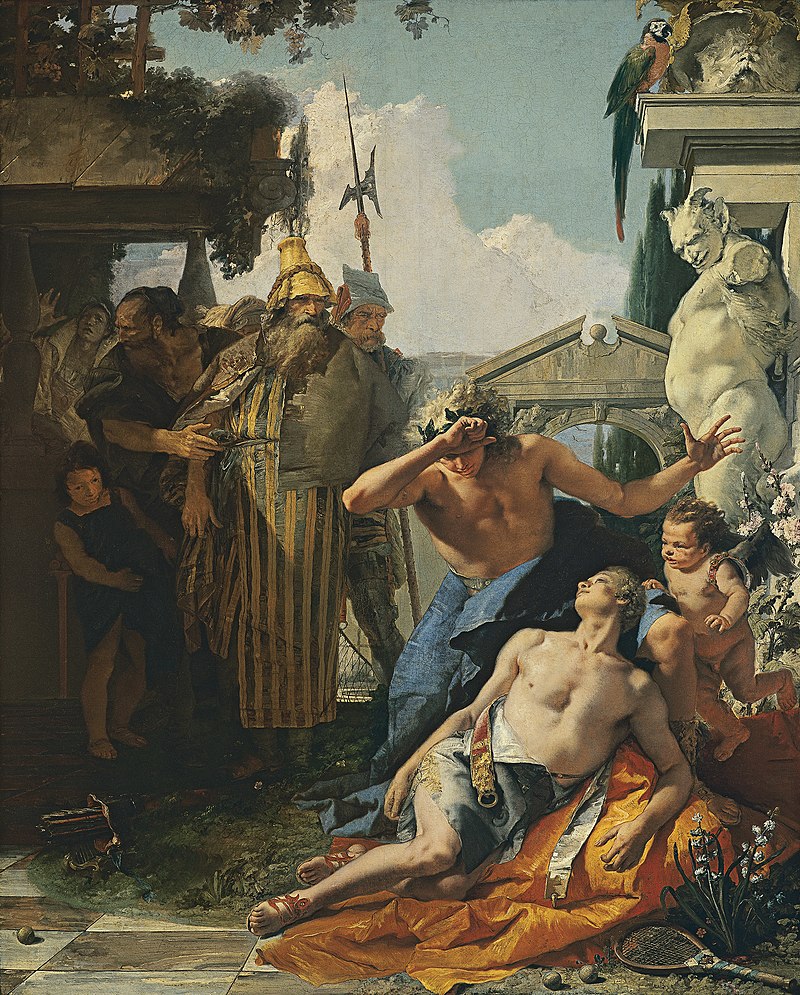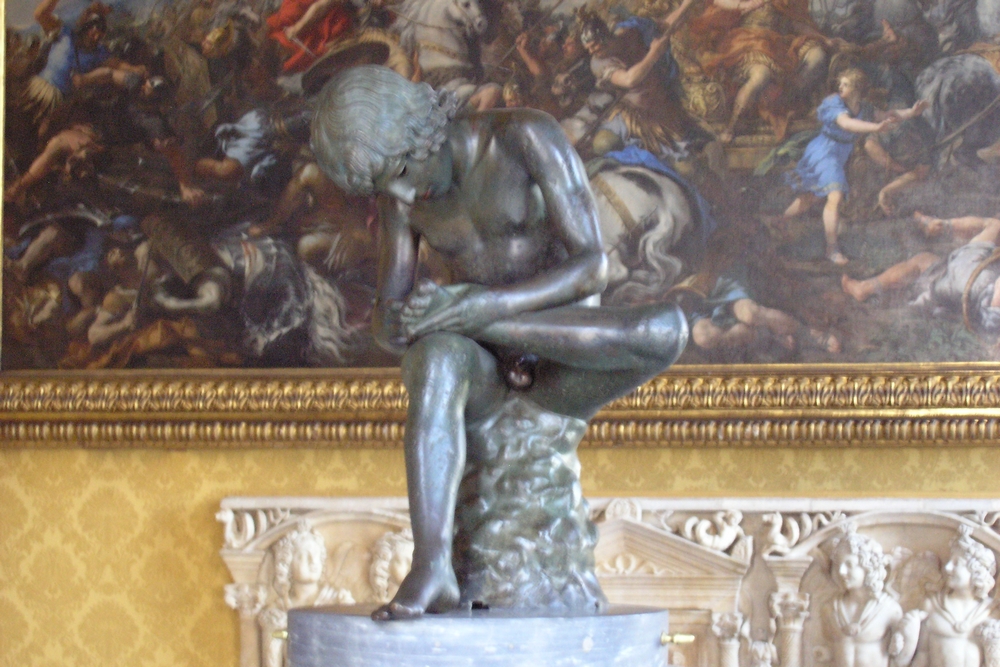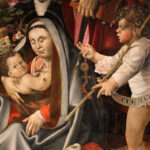Prelude: The Allure of Greek Myths in Art
In the collective imagination, Greek myths stand as pillars of artistic inspiration. Rich in symbolism and archetypes, they provide a vivid canvas on which artists from every era have painted their world views. The myth of Hyacinthus and Apollo, in particular, emerges as an emotional fresco intertwining love, tragedy, and the changing nature of human existence.
The Tragedy of Hyacinthus: A Tale of Love and Jealousy
In Ovid’s narrative, Apollo’s love for the young Hyacinthus is marked by a heart-wrenching intensity. However, this love is not without danger: the jealousy of Zephyrus, the wind god, plays a crucial role in Hyacinthus’ tragic fate. The fatal accident during the discus game is not a mere chance event, but a deliberate act of jealousy, a manifestation of tormented and unrequited love.
Artistic Interpretations: Mirrors of the Human Soul
Each artist who has interpreted this myth has infused their work not only with their own aesthetic vision but also with an intrinsic understanding of the human psyche.
- Nicolas-René Jollain: His interpretation focuses on the moment of impact, capturing Apollo’s anguish and despair. Jollain, with his sensitive brushwork, explores the themes of regret and irreparable loss.
- Merry-Joseph Blondel: Blondel’s work is a tribute to classical beauty and the ideal of pure love, but with an underlying vein of sadness that echoes the fragility of human joy.
- Jean Broc: Broc exudes a strong sense of dramatic romanticism. His approach highlights the ephemeral nature of love and beauty, underscoring the tragedy of existence.
- Giovanni Battista Tiepolo: Tiepolo, with his bright palette and dynamic composition, emphasizes the divine aspect and the power of the gods, reflecting on how their actions influence human fate.
- Alexandre Kisseliov: Kisseliov’s interpretation moves towards a symbolist exploration, where the myth becomes a vehicle to express inner conflicts and unspoken desires.
- Peter Paul Rubens: Rubens, through his baroque expression, magnifies the human and divine drama, immersing the viewer in a reality where emotions and sensuality blend.
Psychology and Metaphor: Sun, Flower, and Human Life
The myth of Hyacinthus and Apollo can be interpreted as a metaphor for human life. Apollo, representing the sun, is the source of life that makes Hyacinthus, the flower, bloom, but is also the cause of his downfall. Zephyrus, the jealous wind, symbolizes the unexpected forces that can alter life’s course. This narrative reflects the cycle of life and death, a universal theme that deeply touches the human soul.
Conclusion: The Myth as a Mirror of Existence
Through the various artistic interpretations of the myth of Hyacinthus and Apollo, we glimpse not only the beauty and tragedy of the mythological tale but also a mirror of our own human experiences. These works of art, rich in psychological and emotional meaning, continue to speak to generations, demonstrating the myth’s ability to reflect the deepest facets of the human condition.

